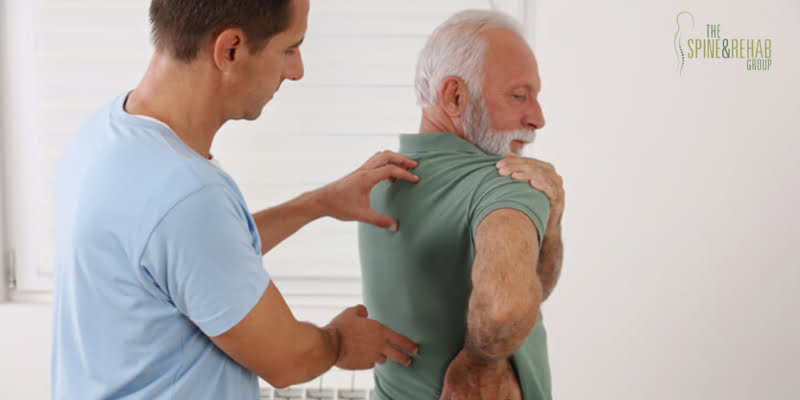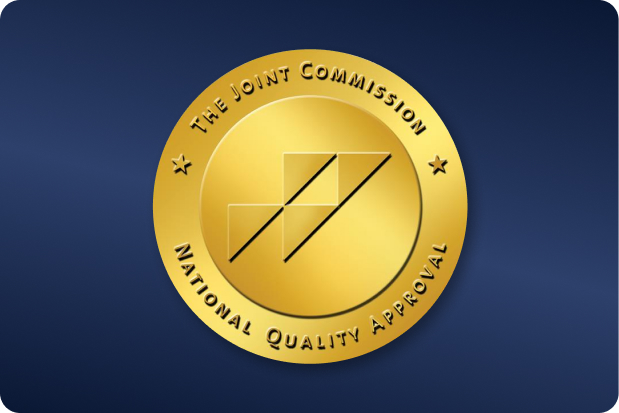 OUR LOCATIONS
Call to book 201.523.9590
OUR LOCATIONS
Call to book 201.523.9590
 OUR LOCATIONS
Call to book 201.523.9590
OUR LOCATIONS
Call to book 201.523.9590

Spinal stenosis affects around half a million people in the United States alone, with that number expecting to grow as the population gets older. Because spinal stenosis gets more likely as people age, the issue with it becomes less of prevention, and more of management. Proper management (combined with early detection and a preventive lifestyle) means that people with spinal stenosis can still live comfortable lives.
How do you manage the symptoms of spinal stenosis? While the precise treatment and management options will differ depending on the severity of the condition, changes to your lifestyle and medication can be enough. If it’s diagnosed early, it’s possible to prevent spinal stenosis from becoming too debilitating.
Spinal stenosis is characterized by the narrowing of gaps between vertebrae in the spinal column. This can lead to plenty of acute and chronic symptoms, but it mostly manifests in sharp attacks of pain and inflammation. Treatment options are more focused on prevention and pain management, though there are some that can provide more permanent results.
It can also cause acute and chronic pain and numbness in the neck, arms, and legs. Serious complications can even lead to the growth of bone spurs. Permanent nerve damage to the spinal cord is also possible, but this usually happens if the condition is left untreated.
Most tests for spinal stenosis will involve procedures like magnetic resonance imaging, though physical exams can also pick up on key signs. Symptoms like pain in the pelvis and buttocks can also indicate this condition. Finally, risk factors like osteoarthritis or any age-related degenerative disorders can also develop the condition.
Here are some ways you can use to treat spinal stenosis and its symptoms:
For most cases of spinal stenosis, the most effective way of management would be physical therapy. While there may be no standard regimen for this (on account of every patient’s progression with the condition being different), most doctors will usually integrate:
The goal of these activities is to strengthen the body and allow it to move more comfortably. The effects of this therapy are twofold: it allows your body to condition itself effectively against further compression, and it can allow you to manage pain better. It can also help treat injuries arising from spinal stenosis, like tears in the ligament or active trauma to the spinal column.
Because spinal stenosis presses on nerve clusters in the spinal column, your doctor would advise that you target your flexibility and other supporting structures so all the weight isn’t compressed into one area. Other exercises build your core muscles and promote better function of the body to compensate for the diminished capabilities of your spinal column.
But since physical therapy is a management method and not very effective in treating spinal stenosis, most therapy regimens will last anywhere from a few months to years. Sometimes, where the management of spinal stenosis is more preventive than curative, regular physical therapy can help stave off the symptoms and overall reduce the likelihood of the condition worsening.
Another culprit behind spinal stenosis (or any spine-related condition) is poor posture. This is a more manageable issue that can be dealt with in a variety of ways since poor posture is a common issue that many people face daily. While you can certainly tackle poor posture by yourself, for cases of spinal stenosis, it’s better to do it with professional help.
There are three areas that a therapist or doctor would usually tackle when addressing poor posture:
Sitting posture has taken the forefront with posture correction since people have been more prone to sitting for long periods on their phone or on the computer. This can be corrected in plenty of ways, like getting a more ergonomic chair, not sitting down for long periods, or getting a standing desk. Even if sitting down helps ease the pain from spinal stenosis, management of this area is more directed towards helping the spinal column realign itself and rest from all the weight placed on it during the day.
Walking can be addressed in two ways: either how the person walks or their frequency of walking. Contrary to popular belief, people don’t always walk in the same way. Things like shoe elevation, compensation for aches and pains in the back, and force of habit can all contribute to a substandard form when walking. Getting shoe inserts, taking regular walks, and practicing correct posture when walking are all excellent ways to address this problem.
Finally, sleeping positions can have a significant effect on your spine if you sleep the wrong way. This problem can be a little more difficult to diagnose and treat because people are often unaware of their sleeping positions, especially if they’re used to it. Your doctor will most likely ask you about your experiences with sleeping and waking up, and will make recommendations like getting better pillows, a different mattress, and even back braces to use when you sleep.
Posture improvements can do a lot to help manage the symptoms of spinal stenosis, but are not supposed to be treatments. Most of the time, they’re combined with physical therapy and post-operative aftercare to help condition patients to hold their spine the right way.
Diet and exercise can be considered for patients that have spinal stenosis who are also overweight. Because additional fat in the body presses down on the spine and makes it support more weight, it aggravates spinal stenosis and may even lead to the condition developing.
While your doctor may suggest diet changes to help cope with the symptoms of spinal stenosis, it’s more likely that you’ll get better advice from a dietitian about the foods that you can eat. Sudden changes in diet and eating habits are not advised because of the effects they can have on the body, which can often get in the way of treating spinal stenosis. Given that the body needs an adequate supply of nutrients to sustain the healing and management of spinal recovery, any changes in diet should be carefully monitored.
Physical activity is another recommended method to help reduce weight and ease the symptoms of spinal stenosis. It promotes flexibility, more muscle support, and overall physical improvement. The difference between exercise and physical therapy is exercise is often targeted towards encouraging you to a more active lifestyle, while physical therapy is targeted towards restoring the movement and normal functions of specific parts of the body.
One thing to note is that these treatment methods aren’t considered primary care methods for managing spinal stenosis, though they can help improve the quality of life of patients in other ways. Your doctor may recommend that you change your diet and exercise if you’re at risk of developing diabetes and other conditions which can worsen the pain from spinal stenosis.
Surgery is one of the more direct options for addressing spinal stenosis and its symptoms, though most doctors will only recommend this as a first method of treatment in specific circumstances. The primary goal of surgery is to decompress the affected nerves in the spinal column. Usually, it’s only considered when spinal stenosis has impaired bodily function rather than a preventive measure.
There are three types of surgery used to treat spinal stenosis:
The effects of surgery far exceed that of nonsurgical treatment methods, especially if spinal stenosis has progressed far enough to debilitate the patient. Most people usually notice improvements a month or two after the procedure, with their effects lasting for the next few years.
One reason surgery has been a more popular option for patients is that treatment methods have become less invasive, with prognosis improving for patients that undergo the procedure. Surgery was traditionally a risky treatment for spinal stenosis patients, since the spine can be seriously damaged if the surgery goes wrong. But recent improvements have vastly improved the quality of care that patients get from surgery, and an overall improvement in results.
Something to note is that despite the efficacy of surgeries, there isn’t one procedure that can effectively address every type of spinal stenosis. Owing to the differences in progression, severity, and location of the compressed vertebrae, you’ll need multiple consultations with your doctor if surgery is an option.
Whether it’s due to cost, lack of access, or terrible experience with medical treatments, more people are looking for alternative and complementary medicine to treat spinal stenosis. Two of these procedures include chiropractor appointments and acupuncture.
Chiropractors use manual adjustments and manipulation of the spine to relieve pain, improve posture, and overall help patients with their ergonomics. Chiropractic care has some limited medical research supporting its efficacy, which may help push it to more acceptance as a method of treating spinal stenosis. But because of the limited studies performed specifically about spinal stenosis patients, most doctors would dissuade this as a method of pain management.
It’s for this same reason that acupuncture may also not be for you. While it has shown some success in treating back pain and other issues, the limited studies done specifically on spinal stenosis patients make it a risky proposition. If you are thinking of getting acupuncture, run it by your doctor first.
As with all degenerative disorders, the best way to prevent spinal stenosis from getting worse is early detection and living a lifestyle that lowers your risk for developing it. With regular checkups, everyone has a chance of managing this condition once it’s been detected. Even older patients can live a fairly normal life with physical therapy and the right medication.
The Spine And Rehab Group can help diagnose, treat, and manage your back pain effectively with our personalized treatment plans and highly trained medical staff. Combined with our commitment to delivering innovative and top-notch medical care, we pride ourselves on being one of the premier choices for spinal health in New York City. For more information on us and the services that we can provide, visit one of our clinics today.



